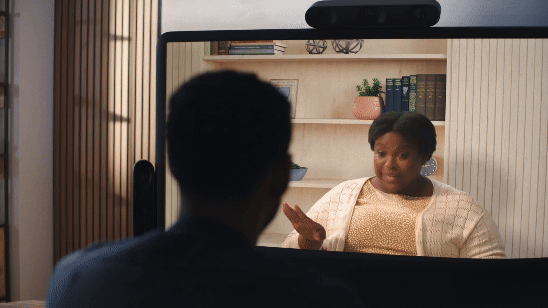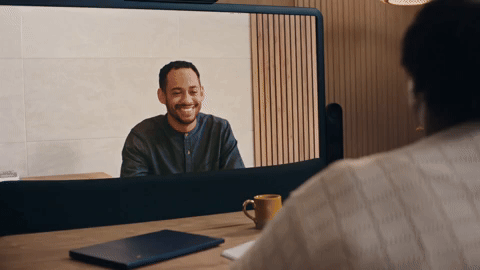I just tried Google’s 3D video conferencing tool launching next year — here’s what Project Starline is like
HP and Google plan to launch a product in 2025

Years of video conferencing have taken much of the wonder out of face-to-face conversations with people from other parts of the globe for me. But just a few minutes using Project Starline, Google's 3D video conferencing tool, made me appreciate how technology can break down distance between people.
And that's a realization that may soon dawn on other potential users, as Project Starline is closer than ever to making the jump out of the experimental stage and becoming an actual product potentially used in conference rooms around the world.
During Google I/O 2024 this week, Google and HP announced that they were teaming up to turn Starline from an impressive demo that blends AI, 3D imaging and other technologies into an actual product that people can buy. The target is to have something ready by 2025.
With that timeframe in mind, my first-ever demo with Project Starline during Google I/O couldn't have come at a more opportune time. Though Google first announced its work on Starline back in 2021, this was my first chance to see the technology in person. And yes, it is a pretty impressive experience.
Project Starline: What it's like

Thanks to the global pandemic and the lockdown of a few years ago, we should all be very familiar with the current video conferencing experience. You're staring at a flat image of someone in a far away conference room beamed to you on a laptop screen or, if you're lucky, a larger monitor. Even then, it's easy for your focus to wander, and to not be sure if you should be staring at the screen, into your webcam or at miniature image of yourself to make sure there's nothing stuck in your teeth.
Project Starline essentially turns that monitor into a magic window, as if the person you're conferencing with is right there on the other side.
Starline does away with all that. It essentially turns that monitor into a magic window, as if the person you're conferencing with is right there on the other side. There's a depth to not only their face but to the background behind them. It's almost to the point where you can reach out and touch them. (Though I wouldn't — the Google employee I was conferencing with in my demo and I attempted a virtual high-five, and it definitely killed the "you are there" illusion.)
Had I experienced Starline a few years earlier, there would have been a lot more equipment in the room, but Google has managed to shrink things down. Now, there were just three sets of dual cameras set up on the sides and top of the monitor, suggesting that the commercialized version of Starline is not going to require a lot of equipment.
Sign up to get the BEST of Tom's Guide direct to your inbox.
Get instant access to breaking news, the hottest reviews, great deals and helpful tips.
You don't get a flawless image. In my conversation, I noticed some flickering around the edges of the person I was talking, particularly around their neck. It wasn't particularly distracting — in fact it made the experience feel more like those holograms you see in movies. It certainly seems a more natural way of communicating than those 3D avatars that Apple's Vision Pro headset uses.
And making things feel natural seems like much of the point to Project Starline. Certainly, I found myself making eye contact with the person on the other end of the conversation, without my attention wandering off to other parts of the room. Granted, this was a brief demo and not an hour-long meeting, so it would be interesting to see if that attention holds with a longer Starline session.
Still, Starline impresses, even if I only experienced it in a small dose. I liked the way the person I was conversing with seemed to pop out of the screen. When they extended their arm, it seemed to come right out of the frame — as if they were talking to me through a window like Google describes. It's also quite enjoyable to experience 3D without having to don any extra gear — no glasses and certainly no $3,499 headset.
Project Starline outlook
We should start to find out next year when the Google-HP partnership brings the Starline-inspired hardware to market. And Google says that whatever product emerges will work with existing video conferencing services, such as Google Meet and Zoom.
More from Tom's Guide
Philip Michaels is a Managing Editor at Tom's Guide. He's been covering personal technology since 1999 and was in the building when Steve Jobs showed off the iPhone for the first time. He's been evaluating smartphones since that first iPhone debuted in 2007, and he's been following phone carriers and smartphone plans since 2015. He has strong opinions about Apple, the Oakland Athletics, old movies and proper butchery techniques. Follow him at @PhilipMichaels.

